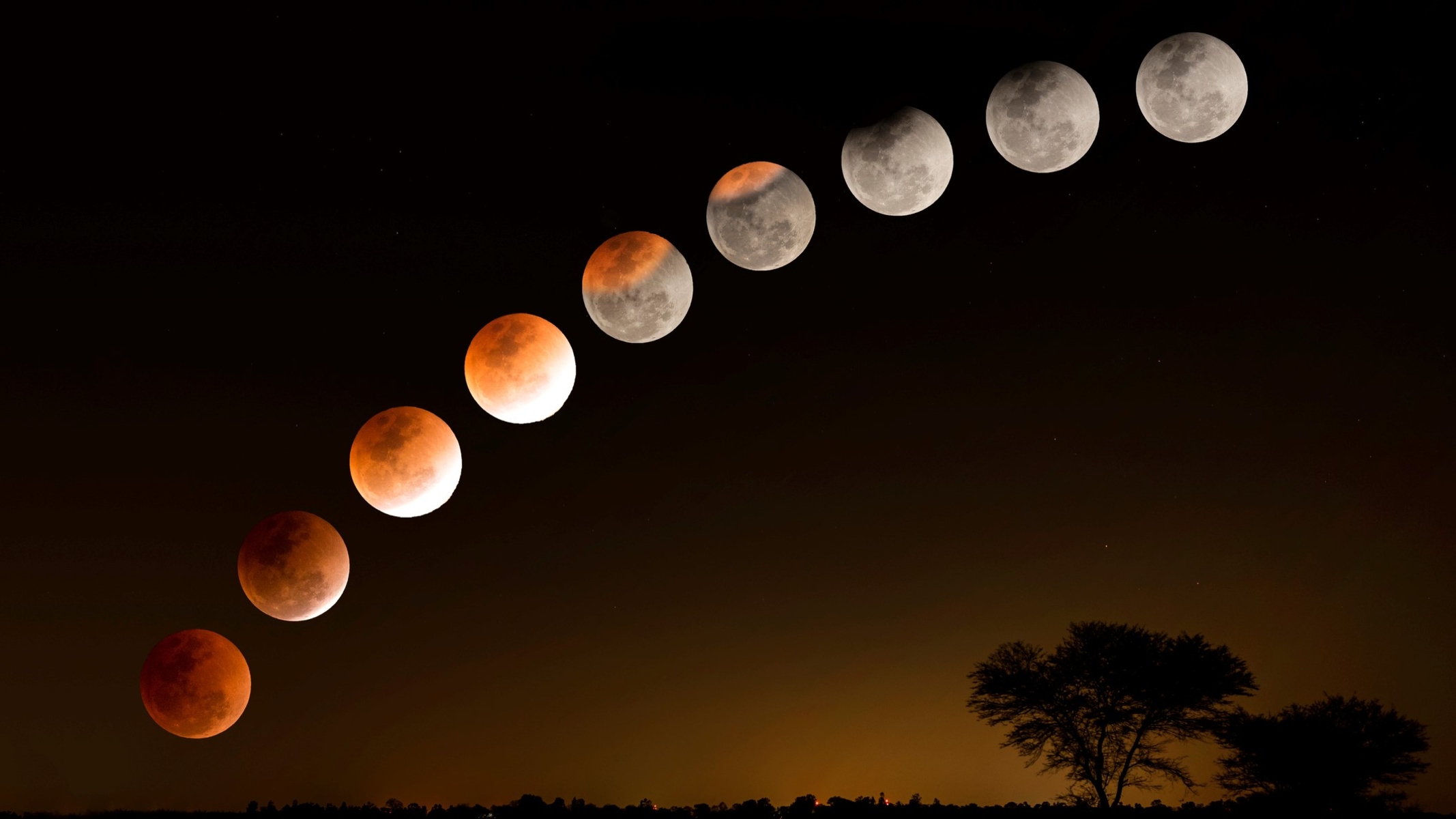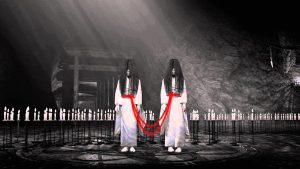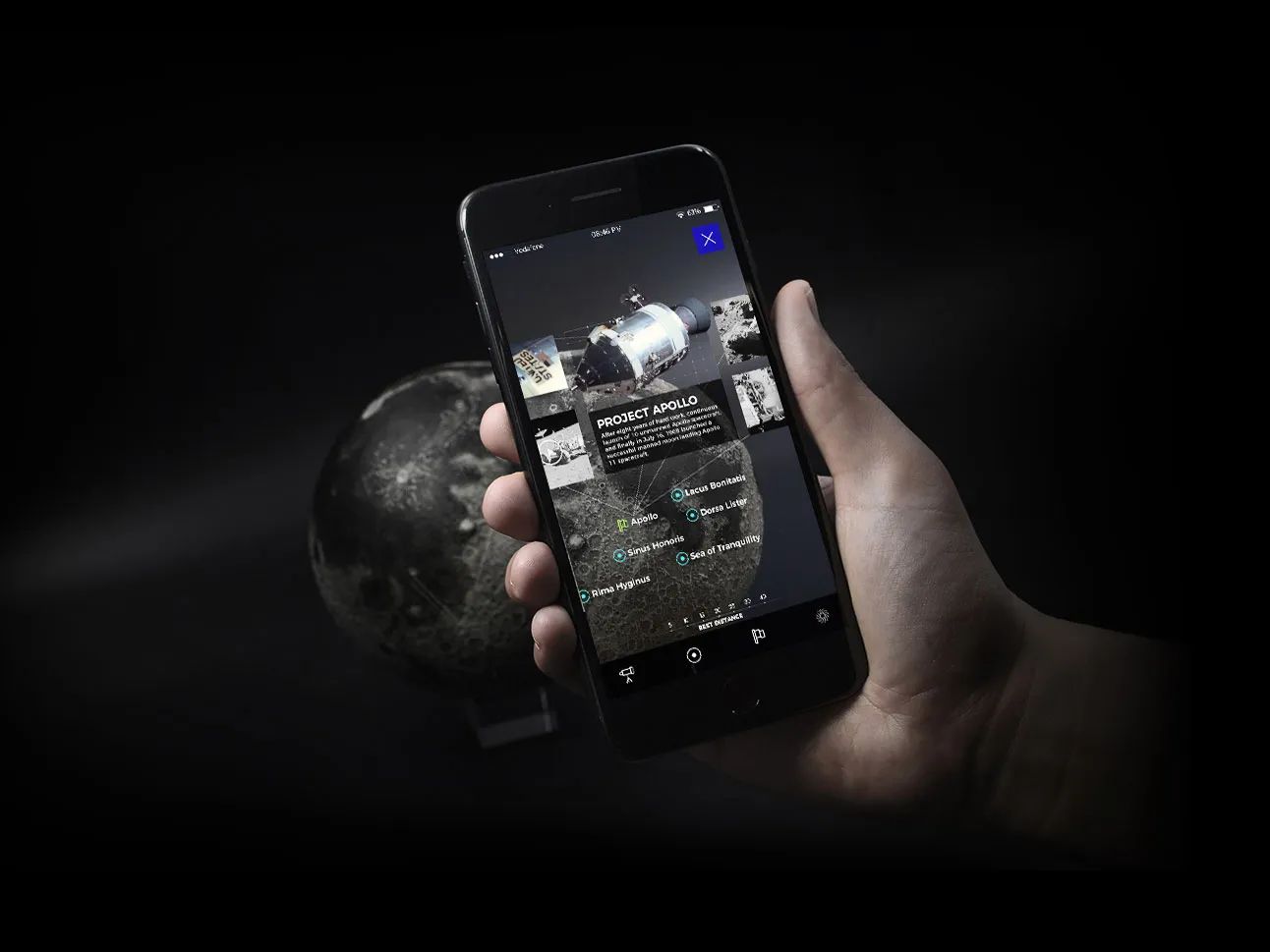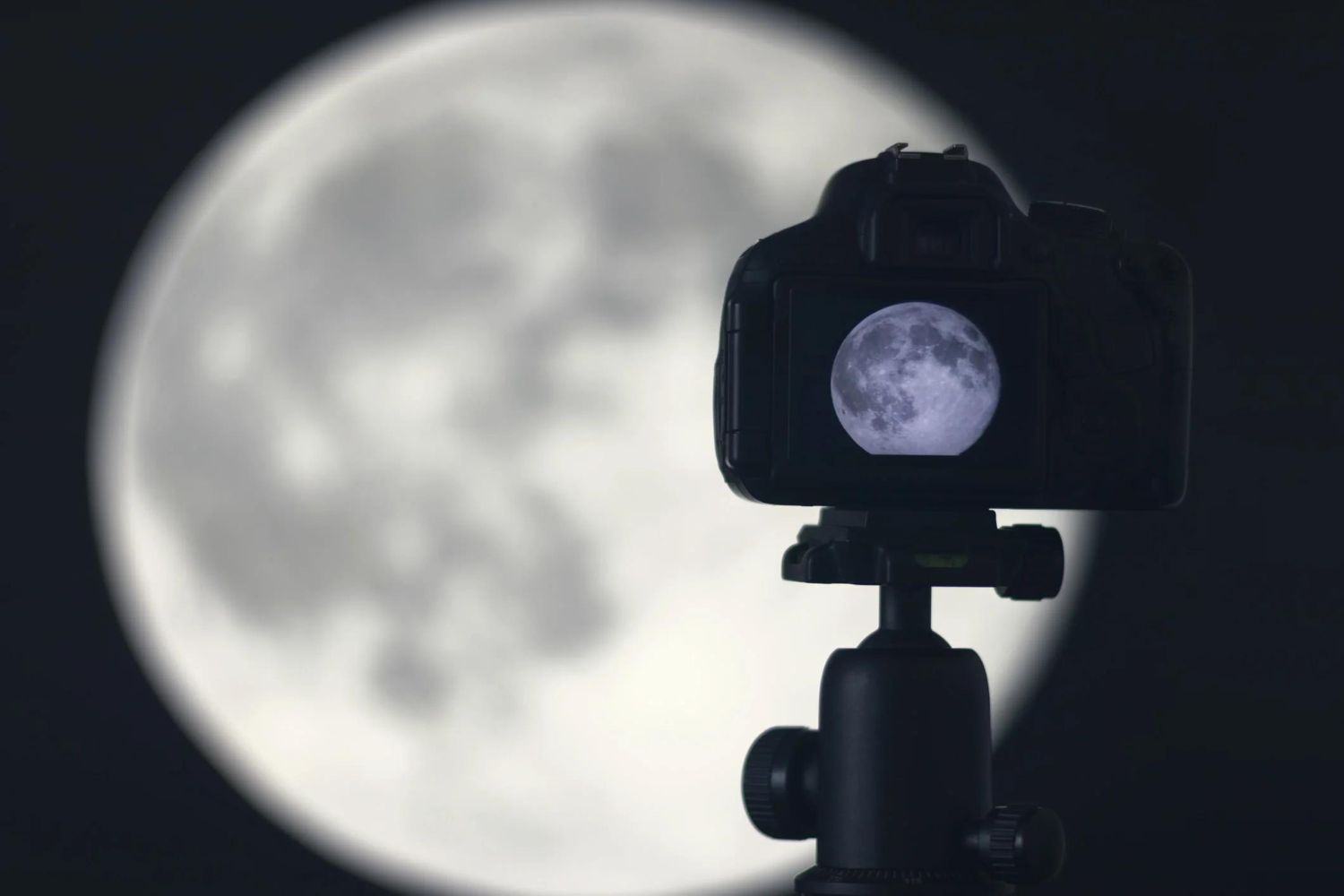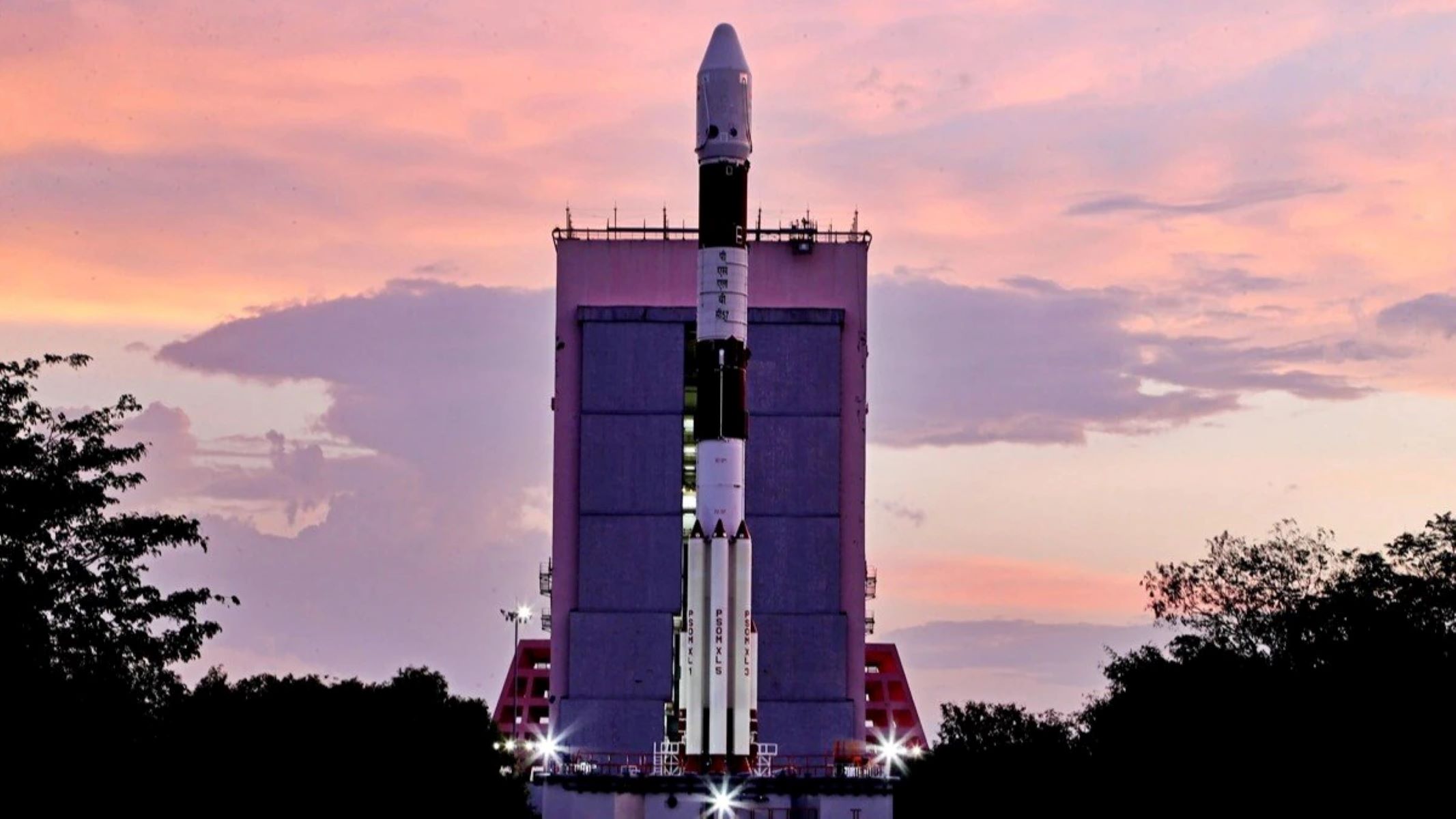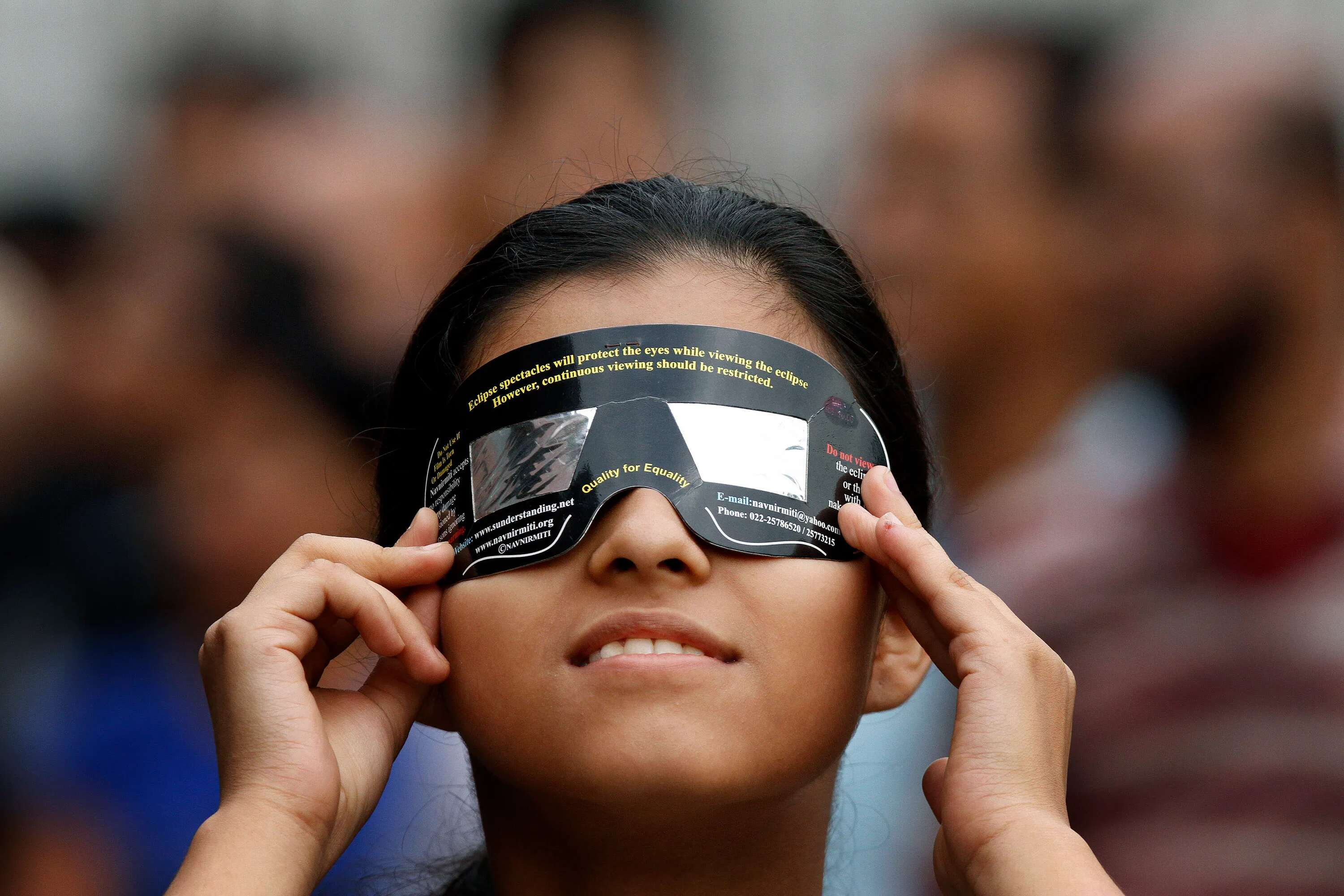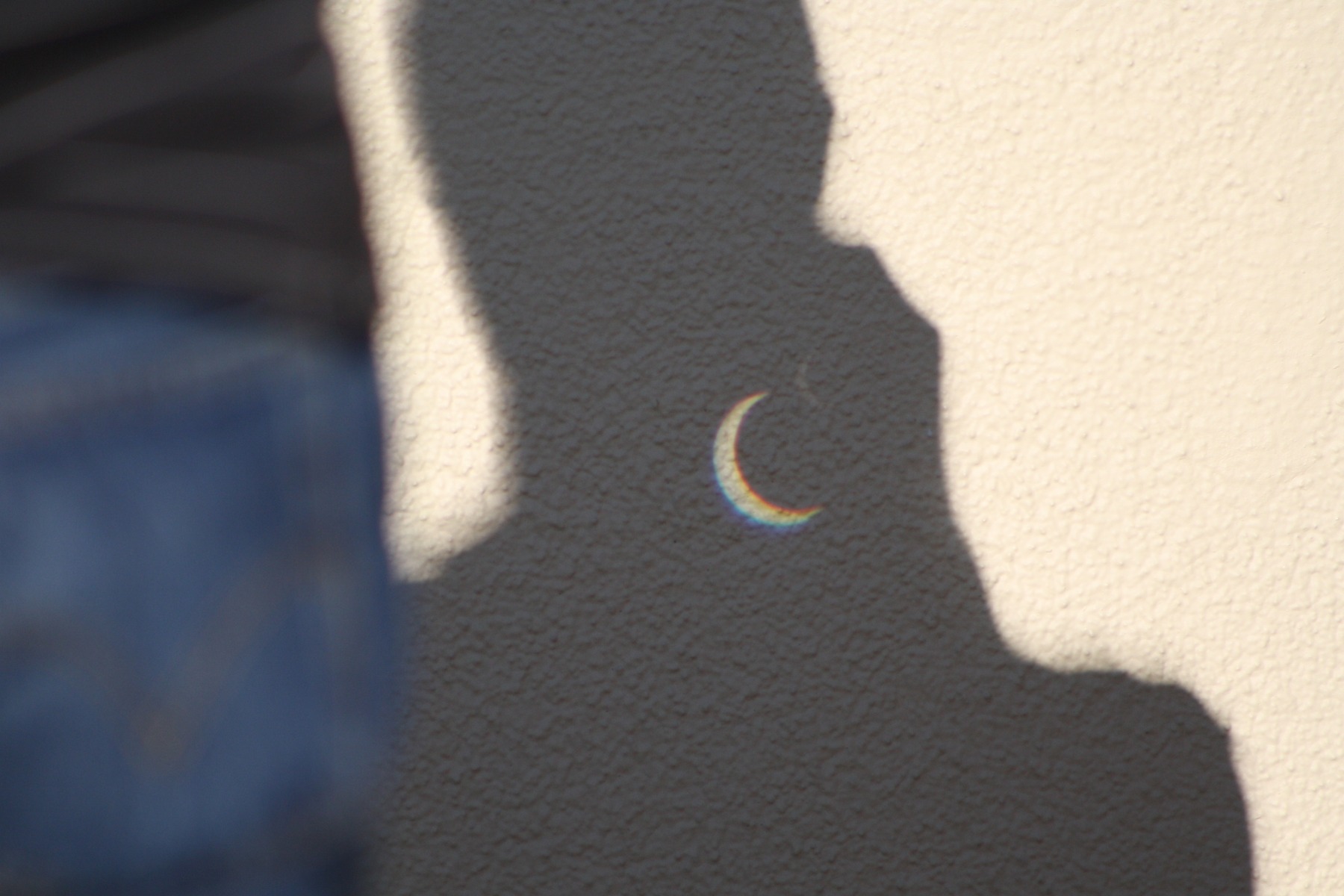Introduction
Welcome to the mesmerizing world of lunar eclipses! As the Earth aligns itself between the Sun and the Moon, the moonlit sky transforms into a mysterious spectacle. A lunar eclipse occurs when the Moon passes through the Earth’s shadow, casting a breathtaking shadow over its surface.
Lunar eclipses have captivated humans for centuries, inspiring awe and wonder. They are not only celestial events but also cultural and historical phenomena, symbolizing different meanings across various civilizations. From ancient Greek myths to indigenous folklore, lunar eclipses have held profound significance in human culture.
Aside from the cultural fascination, lunar eclipses also offer a unique opportunity to understand the celestial workings of our universe. They provide astronomers, scientists, and enthusiasts alike with invaluable insights into planetary movements, Earth’s atmosphere, and the interplay of light and shadow.
Throughout history, lunar eclipses have played a significant role in scientific discoveries and astronomy advancements. Observing and studying them have allowed astronomers to refine their understanding of lunar cycles, planetary orbits, and the Earth-Moon-Sun system.
In this comprehensive guide, we will delve into the enchanting world of lunar eclipses. We will explore their symbolism, historical importance, and the practical aspects of observing and capturing these awe-inspiring events. Whether you are a seasoned stargazer or a curious newbie, this guide will equip you with the knowledge and tools to make the most of the upcoming lunar eclipses.
So, sit back, relax, and embark on a celestial journey as we uncover the secrets of lunar eclipses and learn how to watch and appreciate these stunning cosmic dances.
Understanding Lunar Eclipse
Before we delve into the mesmerizing experience of watching a lunar eclipse, let’s first understand the science behind this celestial phenomenon. A lunar eclipse occurs when the Moon, Earth, and the Sun align in a straight line, with the Earth positioned between the Sun and the Moon.
The Earth casts its shadow into space, consisting of two parts: the umbra, which is the inner, dark shadow, and the penumbra, a lighter, outer shadow. During a lunar eclipse, the Moon passes through the Earth’s shadow, resulting in the remarkable transformation we witness from Earth.
There are three types of lunar eclipses: total, partial, and penumbral. A total lunar eclipse happens when the Moon entirely passes through the Earth’s umbra, creating a magnificent and often dramatic reddish glow. A partial lunar eclipse occurs when only a portion of the Moon passes through the umbra, while a penumbral lunar eclipse happens when the Moon passes only through the Earth’s penumbra, resulting in a subtle shading effect.
During a total lunar eclipse, the Moon’s appearance can undergo a striking change. It can transition from its usual bright, silvery glow to a deep, coppery or reddish color. This occurs due to the sunlight passing through the Earth’s atmosphere before reaching the Moon. The Earth’s atmosphere scatters shorter wavelength blue light, allowing longer wavelength red light to reach and illuminate the Moon during the eclipse, giving it an otherworldly hue.
One fascinating aspect of lunar eclipses is that they are visible from anywhere on the Earth’s night side, making them accessible to people across different regions. However, the duration and visibility of a lunar eclipse can vary depending on factors like the geographical location, time of year, and the moon’s position in its orbit.
Understanding the science behind a lunar eclipse can deepen our appreciation for this celestial wonder. By grasping the mechanics of Earth, Moon, and Sun alignment and the interplay of light and shadow, we can truly marvel at the grandiosity of these cosmic events.
Importance of Lunar Eclipse
The significance of a lunar eclipse extends far beyond its breathtaking visual display. Throughout history, lunar eclipses have held profound cultural, spiritual, and scientific importance to civilizations around the world.
One of the primary cultural and spiritual significances of lunar eclipses is that they symbolize change and transformation. Many ancient cultures believed that the Moon, with its ever-changing phases, represented the cycle of life, death, and rebirth. During a lunar eclipse, when the Moon temporarily disappears or changes its appearance, it was often associated with moments of transition, introspection, and spiritual transformation.
Lunar eclipses also played a role in ancient calendars and timekeeping systems. For civilizations dependent on the lunar calendar, the occurrence of a lunar eclipse was a crucial marker for tracking time, measuring celestial cycles, and predicting future astronomical events.
In addition to their cultural and spiritual significance, lunar eclipses have been vital for scientific understanding. Studying the characteristics and patterns of lunar eclipses has helped scientists refine their knowledge of Earth’s orbit, the Moon’s orbit, and the intricacies of the celestial ballet involving our planet, the Moon, and the Sun.
Lunar eclipses provide scientists with valuable insights into the Earth’s atmosphere. The appearance and color of the Moon during an eclipse are influenced by the amount of dust, clouds, and pollutants present in our atmosphere. By studying these atmospheric effects, researchers can gain a better understanding of our planet’s air quality and climate.
Furthermore, lunar eclipses have played a role in advancing our comprehension of the Moon’s geology and physical characteristics. By observing the Moon during an eclipse, scientists can study the way sunlight interacts with its surface, revealing details about its composition, topography, and geological features.
Overall, lunar eclipses hold immense cultural, spiritual, and scientific importance. They connect us to our ancient past, inspire awe and wonder, and contribute to our understanding of the universe. Witnessing a lunar eclipse is not just a visual spectacle, but an opportunity to appreciate the intricate workings of our celestial neighborhood and our place within it.
Preparing for Lunar Eclipse
As the anticipation builds for the upcoming lunar eclipse, it’s important to make the necessary preparations to ensure a seamless and enjoyable experience. Whether you’re a seasoned stargazer or new to celestial events, a little planning can go a long way in maximizing your lunar eclipse viewing adventure.
First and foremost, it’s essential to mark your calendar and keep track of the date and time of the lunar eclipse. Lunar eclipses occur at various intervals throughout the year, so staying informed about upcoming events will allow you to plan ahead and make the most of these astronomical spectacles.
Next, consider the weather conditions for the night of the eclipse. Clear skies are ideal for optimal viewing, so keep an eye on weather forecasts as the date approaches. If the weather outlook is cloudy or unfavorable, you may need to consider alternative locations or find ways to stream the eclipse online.
Choosing a suitable location is key to enjoying the lunar eclipse. Look for a spot away from bright city lights and light pollution, as this can greatly diminish the visibility of celestial events. Seek out a dark and open area, such as a park or countryside, to fully immerse yourself in the night sky.
To enhance your viewing experience, consider bringing along some essentials. A comfortable camping chair or blanket will provide a cozy seating arrangement as you gaze up at the celestial display. Warm clothing and blankets are also recommended, as lunar eclipses often occur during the nighttime when temperatures can drop.
Additionally, it’s beneficial to familiarize yourself with the lunar eclipse’s expected timeline. Understand when the partial and total phases will occur, as well as the duration of each phase. Knowing the progression of the eclipse will help you plan when to watch and engage in specific activities, such as photography or observing the Moon’s changing hues.
Lastly, don’t forget to bring any equipment or tools you may need to enhance your lunar eclipse experience. Binoculars or a telescope can provide a closer look at the Moon and reveal intricate lunar details during the eclipse. A camera with adjustable settings will allow you to capture stunning images of this celestial spectacle.
By taking the time to prepare for the lunar eclipse, you will set yourself up for a remarkable and unforgettable experience. From finding the perfect viewing location to gathering the necessary equipment, these preparations will ensure that you can fully immerse yourself in the beauty and wonder of a lunar eclipse.
Choosing the Right Location
When it comes to experiencing a lunar eclipse, selecting the right location is crucial to ensure optimal viewing conditions. Finding a spot with clear skies, minimal light pollution, and an unobstructed view of the horizon will greatly enhance your lunar eclipse adventure.
One of the first considerations in choosing a location is to find an area away from city lights and light pollution. Artificial lights can diminish the visibility of celestial events like lunar eclipses. Look for a spot that is far from urban areas, such as a park, beach, or countryside, where the night sky is not hindered by excessive light.
Secondly, consider the weather conditions. Clear skies are vital for a splendid lunar eclipse viewing experience. Keep an eye on weather forecasts as the eclipse approaches. If cloud cover is expected, you may need to explore alternative locations or plan to stream the eclipse online from the comfort of your home.
An unobstructed view of the horizon is essential during a lunar eclipse. This allows you to witness the moonrise or moonset and witness the entire eclipse from start to finish. High vantage points, such as hilltops or open fields, can provide a wide-angle view of the sky, enabling you to fully embrace the celestial spectacle.
Consider the surrounding landscape and its features. Look for locations with minimal obstruction from trees, buildings, or other structures that could obscure your view of the Moon during the eclipse. A clear line of sight will allow you to observe the Moon’s transformation as it passes through Earth’s shadow.
Check for any potential sources of noise or distractions at your chosen location. While a lunar eclipse is a visually captivating event, it’s also an opportunity to immerse yourself in the peaceful ambiance of the night sky. Avoid areas with excessive traffic, loud noises, or other disturbances that could disrupt your experience.
Lastly, familiarize yourself with local regulations or restrictions that may apply to your chosen location. Some parks or public areas may have specific rules regarding observing events like lunar eclipses, so be sure to check for any permits or guidelines that need to be followed.
By taking the time to choose the right location, you can enhance your lunar eclipse experience and make the most of this celestial phenomenon. Whether it’s a serene park, a secluded beach, or a tranquil countryside, finding a spot with the ideal conditions will allow you to fully immerse yourself in the wonder of the lunar eclipse.
Tools for Observing Lunar Eclipse
Observing a lunar eclipse doesn’t require any fancy or expensive equipment, but having a few tools can greatly enhance your experience and appreciation of this celestial event. Whether you’re a beginner or an experienced stargazer, here are some tools that can help you make the most of observing a lunar eclipse.
Binoculars: Binoculars are a popular and accessible tool for lunar eclipse observation. They provide a closer look at the Moon and allow you to observe intricate details, such as craters, mountains, and surface textures. Choose binoculars with a moderate magnification, preferably 7x to 10x, and a stable tripod or mount to minimize hand shaking.
Telescopes: Telescopes offer even more detailed views of the Moon during a lunar eclipse. They allow you to zoom in on specific areas of the lunar surface and explore its breathtaking features. A telescope with a larger aperture will provide a clearer and sharper view. Consider using a lunar filter to reduce glare and enhance contrast during the eclipse.
Camera: Capturing stunning photographs of a lunar eclipse can be achieved with a DSLR or a digital camera with manual settings. Use a tripod to keep the camera steady and adjust settings such as exposure, ISO, and shutter speed to achieve the desired effect. Experiment with different compositions and exposures to capture the beauty of the Moon during the eclipse.
Smartphone Apps: Numerous smartphone apps are available that can enhance your lunar eclipse experience. These apps provide real-time information about the eclipse, phases, timing, and visibility from your location. They can also help you identify stars, planets, and constellations visible during the eclipse, making it a handy companion for stargazers.
Star Charts: A star chart or planisphere is a useful tool for identifying celestial objects and navigating the night sky during a lunar eclipse. It helps you locate prominent stars, constellations, and other points of interest, enabling you to appreciate the context of the lunar eclipse within the broader cosmic backdrop.
Red LED Flashlight: When observing a lunar eclipse, it’s important to maintain your night vision and avoid disrupting the dark-adapted eyes. A red LED flashlight is ideal for reading star charts, adjusting equipment, or making notes without compromising your vision. Red light has a longer wavelength and is less likely to disturb your night vision compared to white light.
Warm Clothing and Comfortable Seating: While not directly related to observing, it’s crucial to ensure your comfort during a lunar eclipse. Dress warmly with layers, as lunar eclipses often occur during the nighttime when temperatures can drop. Bring a comfortable camping chair, blankets, and cushions to create an enjoyable and cozy setup for your lunar eclipse viewing session.
Remember, the most important tool for observing a lunar eclipse is your curiosity, excitement, and appreciation for the wonders of the universe. These tools serve as aids to enhance your experience and allow you to delve deeper into the captivating world of lunar eclipses.
When and Where to Watch Lunar Eclipse
Timing is crucial when it comes to witnessing a lunar eclipse. Knowing when and where to watch ensures that you don’t miss out on this awe-inspiring celestial event. Lunar eclipses occur at different times throughout the year, and the visibility of each eclipse varies based on your location.
The first step in determining when to watch a lunar eclipse is to check the lunar eclipse calendar. These calendars provide detailed information about upcoming lunar eclipses, including the date, time, and duration of each phase. Keep in mind that lunar eclipses can be visible from a specific region or be viewable from multiple parts of the world.
Next, consider your geographical location. Lunar eclipses can be visible from different regions of the world, and the visibility of each eclipse can vary based on your proximity to the path of the eclipse. Consult a lunar eclipse visibility map to determine if the eclipse will be visible from your location and to what extent.
When watching a lunar eclipse, it’s important to find a clear and unobstructed view of the sky. If possible, choose a location away from city lights and light pollution to maximize your visibility of the eclipse. This could be a park, a beach, or any open area that offers a panoramic view of the sky.
It’s also crucial to consider the local weather conditions for the time of the eclipse. A clear sky is essential for optimal viewing. Keep an eye on weather forecasts and be prepared to adjust your plans accordingly if unfavorable weather is expected. In case of inclement weather, you may need to consider alternative locations or explore options for live streaming the eclipse online.
Timing is everything when it comes to observing a lunar eclipse. Plan to arrive at your chosen location well in advance, especially if it’s a popular stargazing spot. This will allow you to set up your equipment, find a comfortable viewing position, and fully immerse yourself in the celestial grandeur of the lunar eclipse.
Lastly, remember that each lunar eclipse unfolds in multiple phases – the penumbral, partial, and total phases. Be aware of the specific timing of each phase to ensure you don’t miss any significant moments during the eclipse. Take note of when the partial and total phases begin and end, allowing yourself ample time to observe the changing appearance of the Moon during the eclipse.
By understanding the timing and location of a lunar eclipse, you can position yourself for an unforgettable experience. Mark your calendar, check the visibility maps, find a suitable location, and keep an eye on the weather. With careful planning and a bit of luck, you’ll be able to witness the enchanting spectacle of a lunar eclipse.
Techniques for Watching Lunar Eclipse
Watching a lunar eclipse is a mesmerizing experience that allows you to witness the celestial dance between the Earth, Moon, and Sun. To make the most of this event, it’s important to use some techniques that will enhance your observation and appreciation of the lunar eclipse.
1. Observe with the naked eye: The simplest and most accessible technique for watching a lunar eclipse is to observe it with the naked eye. Find a clear view of the night sky and watch as the Moon slowly enters the Earth’s shadow and undergoes its transformation. Take your time to fully absorb the unique beauty of the eclipse.
2. Use binoculars or a telescope: If you have binoculars or a telescope, they can greatly enhance your viewing experience. By magnifying the lunar surface, you can observe intricate details such as craters, mountains, and maria (the dark, flat regions on the Moon). Experiment with different magnifications to find the balance between close-up views and maintaining a wide perspective.
3. Capture photographs: Photography allows you to preserve the memory of a lunar eclipse and share it with others. Use a DSLR camera or a digital camera with manual settings to capture stunning images of the Moon during different phases of the eclipse. Experiment with exposure times, ISO settings, and different compositions to capture the unique colors and textures of the Moon during the eclipse.
4. Time-lapse photography: Consider setting up your camera for time-lapse photography. This technique involves taking a series of photographs at regular intervals, capturing the gradual change of the Moon during the eclipse. It creates a visually appealing sequence that showcases the entire event in a condensed timeframe.
5. Livestream online: If you are unable to witness the lunar eclipse in person or if poor weather conditions prevent you from having a clear view, you can still enjoy the event by watching live-streaming coverage online. Many reputable sources, including space agencies and astronomy organizations, provide live streams of lunar eclipses, allowing you to witness the wonder from the comfort of your home.
6. Engage in citizen science projects: Lunar eclipses also provide an opportunity to contribute to citizen science projects. Various organizations and research institutions collect data on lunar eclipses, and you can participate by reporting your observations, photographs, and timings. Contributing to these projects can help scientists gather valuable information about the Earth-Moon system and improve our understanding of lunar phenomena.
Remember to be patient, as lunar eclipses unfold over several hours. Take breaks, relax, and absorb the beauty of the night sky between different phases of the eclipse. These techniques will allow you to fully engage with and appreciate the intricate celestial display of a lunar eclipse.
Capturing Lunar Eclipse Photographs
A lunar eclipse presents a unique opportunity for astrophotography enthusiasts to capture stunning and awe-inspiring images. By following some essential techniques and tips, you can capture the beauty and grandeur of a lunar eclipse through your camera lens.
1. Equipment Preparation: Make sure your camera is fully charged and that you have enough space on your memory card to capture a series of images. Consider using a tripod to keep your camera steady during long exposure shots and reduce the risk of camera shake. A remote shutter release or using the camera’s self-timer mode can further minimize any vibrations.
2. Selecting the Right Lens: Choose a lens with a focal length that meets your desired composition. A telephoto lens (200mm or higher) will allow you to capture close-up detailed shots of the Moon. If you want to capture the entire lunar eclipse scene, consider using a wide-angle lens (24mm to 50mm) to include the surrounding landscape.
3. Manual Mode Settings: Switch your camera to manual mode to have full control over the exposure settings. Start with a low ISO setting (around 100 or 200) to reduce the noise in your images. Experiment with different shutter speeds to find the right balance between capturing the details of the Moon and preserving its brightness in the lunar eclipse atmosphere.
4. Exposure Compensation: Use your camera’s exposure compensation feature to adjust the exposure settings based on the different phases of the lunar eclipse. During the partial phase, the Moon may appear brighter, while during the total phase, it will be darker and may require a longer exposure time. Bracketing your shots by adjusting the exposure compensation can ensure you capture the most accurate exposure.
5. Focus Accuracy: Achieving precise focus is crucial for capturing sharp images of the Moon. Use manual focus and zoom in on the Moon to ensure it is in sharp focus. If your camera has a live view mode, use it to magnify the Moon and fine-tune the focus. Alternatively, you can use the autofocus feature with manual override to ensure accurate focus.
6. Composition and Creativity: Don’t forget about the composition of your lunar eclipse photos. Experiment with different perspectives and compositions to create visually captivating images. Include foreground elements, such as trees, buildings, or landmarks, to provide context and depth to your shots. Be creative and let your artistic vision guide you in capturing unique lunar eclipse photographs.
7. Post-Processing: Once you have captured your lunar eclipse images, take some time to enhance them during post-processing. Adjust the brightness, contrast, and color balance if needed. Be careful not to over-process and maintain the natural appearance of the Moon and its surroundings, while still bringing out the beauty and details captured in your photographs.
Remember, capturing lunar eclipse photographs requires patience and practice. Experiment with different techniques, settings, and compositions to find your personal style and capture breathtaking images that tell the story of this celestial phenomenon.
Safety Measures during Lunar Eclipse
While observing a lunar eclipse is a thrilling experience, it’s essential to prioritize safety. Here are some important safety measures to keep in mind during the event:
1. Use proper eye protection: Unlike solar eclipses, lunar eclipses are safe to observe with the naked eye. You do not need special eye protection to watch a lunar eclipse as the Moon’s dimmed light poses no harm to your eyes. Enjoy the spectacle with peace of mind knowing that direct viewing of a lunar eclipse is safe.
2. Protect yourself from the elements: If you plan to observe a lunar eclipse outdoors, make sure to dress appropriately for the weather conditions. Depending on the time and location of the eclipse, temperatures can drop during the nighttime, so wear warm clothing, hats, gloves, and layered clothing to stay comfortable throughout the event.
3. Be aware of your surroundings: Choose a safe and stable location to observe the lunar eclipse. Ensure you have a clear line of sight to the Moon and that there are no physical hazards or obstacles in your immediate surroundings. Be cautious of any uneven terrain, low-hanging branches, or other potential hazards that could cause accidents or injuries.
4. Secure your equipment: If you are using photography or observing equipment, take necessary precautions to ensure their stability and security. Use a tripod or stabilize your equipment to prevent any accidental slips or falls. Be mindful of the weight and balance of your equipment to avoid any damage to yourself or others.
5. Practice proper astrophotography etiquette: If you are photographing the lunar eclipse, be considerate of others around you. Avoid using flash or any bright lights that may disturb the view of fellow observers. Also, refrain from blocking others’ views or setting up equipment in a way that obstructs the line of sight for others.
6. Stay informed about local guidelines: Familiarize yourself with any rules or regulations that may apply to the location where you plan to observe the lunar eclipse. Some parks or public areas may have specific guidelines regarding stargazing or the use of equipment. Adhere to any safety guidelines or protocols in place to ensure a safe and enjoyable experience for everyone.
7. Plan transportation and accessibility: If you need to travel to a different location to enjoy an optimal view of the lunar eclipse, plan your transportation in advance. Ensure that the area is easily accessible and that you have a clear understanding of parking options, road conditions, and any additional logistics to avoid any last-minute hassles or safety concerns.
Remember, safety should always be your top priority when observing or photographing a lunar eclipse. By following these safety measures, you can fully immerse yourself in the celestial wonder of a lunar eclipse while ensuring a safe and enjoyable experience for yourself and others around you.
Conclusion
Witnessing a lunar eclipse is a remarkable journey into the wonders of the night sky. As the Moon gracefully passes through the Earth’s shadow, it presents a mesmerizing display of celestial beauty, cultural significance, and scientific wonder.
Throughout history, lunar eclipses have captivated cultures worldwide. They have been symbols of transformation, markers of time, and sources of spiritual inspiration. Lunar eclipses have not only shaped ancient calendars and myths but have also played a vital role in advancing scientific understanding.
Preparing for a lunar eclipse involves careful planning, such as marking your calendar, choosing a suitable location, and equipping yourself with the right tools. Watching a lunar eclipse can be as simple as gazing up at the night sky with the naked eye or as intricate as capturing breathtaking photographs with specialized equipment.
Understanding the science and significance of lunar eclipses adds depth to the experience. From comprehending the alignment of celestial bodies to appreciating the intricate play of light and shadow, observing a lunar eclipse offers a glimpse into the workings of our vast universe.
Safety should always be prioritized during a lunar eclipse. Dressing appropriately, ensuring stability, and being mindful of your surroundings are essential to enjoying the event without any risks or hazards.
Whether you embark on this celestial journey alone or share it with others, the magic of a lunar eclipse is sure to leave an indelible impression. Each eclipse is a unique cosmic event, allowing us to reflect on the mysteries of the universe and our place within it.
So, mark your calendar, find the perfect location, and be ready to witness one of nature’s most mesmerizing spectacles. Let the beauty, spirituality, and scientific wonder of a lunar eclipse ignite your curiosity and deepen your appreciation for the wonders of our universe.







